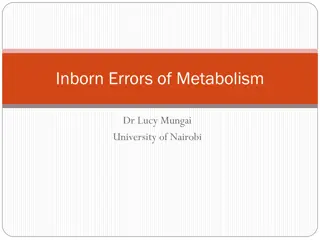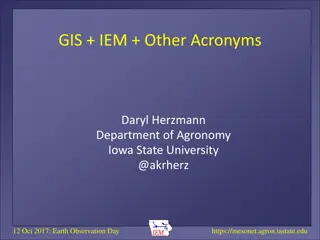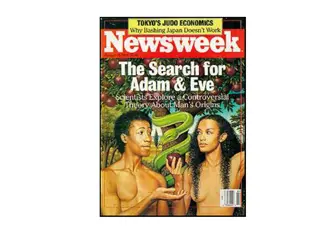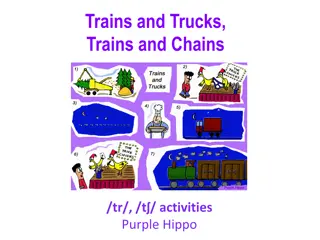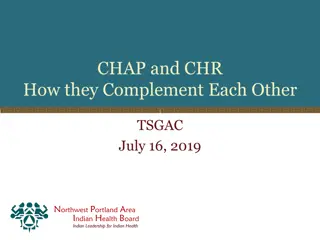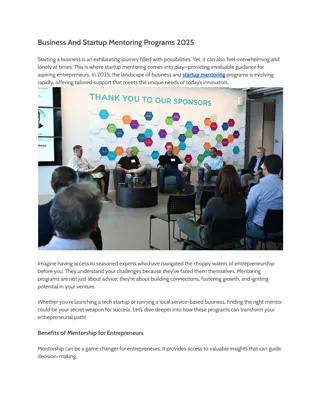
Risks of Internationalization in Business
Explore the various risks involved in international business operations, including political risk, country risk, and financial risks. Learn about factors to consider, such as psychological distance, development levels, and institutional contexts, along with analysis of macroeconomic factors. Understand how political risks can impact foreign investments, the broader implications of country risk, and financial risks associated with market variability. Dive into the concept of financialization and its impact on global markets.
Download Presentation

Please find below an Image/Link to download the presentation.
The content on the website is provided AS IS for your information and personal use only. It may not be sold, licensed, or shared on other websites without obtaining consent from the author. If you encounter any issues during the download, it is possible that the publisher has removed the file from their server.
You are allowed to download the files provided on this website for personal or commercial use, subject to the condition that they are used lawfully. All files are the property of their respective owners.
The content on the website is provided AS IS for your information and personal use only. It may not be sold, licensed, or shared on other websites without obtaining consent from the author.
E N D
Presentation Transcript
Risks of Internationalization 1
The risks of internationalization Firms need to consider: The psychological distance the gap in the development level the social context the institutional context 2
Analysis of what? Macroeconomic factors 1. GDP 2. Pro-capite GDP 3. Unemployment rate 4. Inflation 5. State s role 6. Laws facilitating or limiting entrance 7. Demographic data customers and workers profiles Soft factors beliefs and values work ethic inclination to international cooperation 3
1. Political risk The unanticipated likelihood that a business s foreign investment will be constrained by a host government s policies It s connected to: Terrorism Expropriation Indigenization Transfer risk: Government policies that limit the transfer of capital, payments, production, people, and technology in and out of country Operational risk: Government policies that constrain management and performance of local operations Ownership control risk: Government policies or actions that inhibit ownership or control of local operations 4
2. Country risk It s a broader case of counterpart risk. Credit risk expresses the possibility that the counterpart of an obligation does not respect the deadline and/or the conditions for payment. longer delays in making payment the depreciation of the credit portfolio increasing of instability It affects: The capacity of local debtors to honour their debts the ability to recoup the investment 5
3. Financial risks Risks connected to the variability of market process of financial activities (exchange rates, commodity prices, interest rates) risks Market It s a two way risk Firms need to protect from unfavourable variation But also to to consider the opportunity cost of any hedging The aim is transforming unpredictable events in calculated risks 6
The financialization At the macroeconomic level: development of financial markets and disconnection between financial and real flows. From an atomistic to a systemic vision 1. Development of ICT 2. Deregulation 3. Globalization Speculation and arbitrages
Financialization At the microeconomic level: increasing focus on financial assets and financial investments Transfer of liquidity and capitals Optimization of accounting New sources of profits Hedging BUT Risk to detach resources from the core activities Risk to consider comparative advantages as sources of competitive advantages
The Financial Function Firms must: plan medium- and long-term financial flows choose the sources and types of financing; choose the criteria for assessing the current and prospective conduct manage the multi-currency treasury manage the cash surplus/deficit generated by financial movements; choose the hedging techniques; exploit the anomalies of financial markets; taking advantage of different tax 9
Its important to understand that the exposure to financial (and counterpart risks) depends on: the relevant sector, its structure, and therefore the intensity of competition; the regulations, in the markets of origin, of the productive inputs the regulations, in the host market, of market outputs the entry mode
The supervision nodes The renvoicing centers are in charge of international procurement Cost reduction Possibility to concentrate the currency risk on procurements Renvoicing centers develop the transfer price policies a) criteria of the cost b) criteria of the market Fiscal arbitrage
The main goals Earning, through higher transfer prices of the goods, low profits where the tax system is more rigorous; Seek to earn higher profit where the tax system is less rigorous, in this case by transferring lower prices; Attenuating the effects of restrictions on movements of capital, dividends, and royalties; Reducing the effects of nationalization, should this take place; Reducing the effects of duties. Intra-organizational problems and tax systems integration
Currency risks Three main forms: Transaction risk: exchange variation impacts the debts owed to and by companies in foreign currency; Translation risk: The variation in the exchange rate also impacts the actual countervalue of the financial statement items related to transactions in foreign currency; Economic risk: the exchange variation may impact the company s competitive position in a given market Countervalue effect Currency flow effect
Hedging instruments Traditional instruments a. Invoicing in reporting currency b. Insurance c. Currency basket d. the establishment of an eschange cap and/or an exchange floor Derivatives a. Currency future b. Currency option c. Currency swap What is the variation feared by European importers? What is the variation feared by the European exporters?
Price risks It s connected to the volatility of commodity prices Three main forms: Transaction risk: possibility that an increase (decrease) in the commodities quotations might force the buyer (seller) to pay (collect) an amount greater (less) than that estimated Replacement risk: possibility that an increase in prices might shift demand towards replacement products; Competitive risk: possibility that the increase (decrease) in prices might be to the disadvantage of a company but not its competitors that purchased (sold) at more affordable prices.
Hedging instruments Real instruments a. Agreement at a fix price b. speculative inventory Financial instruments a. Cap and floor b. Collar c. Commodity option d. Commodity future e. .. What are the factors affecting the possibility to develop speculative inventory?
Credit, Country and Systemic risks Credit risk expresses the possibility that the counterparty in a financial service might fail to meet its obligation by the deadlines and under the conditions established by contract Country risk involves responsibilities that fall within the sphere of government and, moreover, may be realized regardless of the insolvency of the individual counterparty, when the authority s will to repay foreign debt, public or private, ceases. Systemic risk: there is a high possibility that a defaulting party s crisis situation will spread by domino effect to other operators (it exists for both credit and country risk) .
Hedging instruments For counterparts risks, firms can use: a. Loans (Financing for suppliers and purchasers, finance for export credits) b. Insurance c. Documentary credits d. Credit Derivatives
Credit Derivatives Agreement according to which one party, upon payment of a single or periodic commission, is hedged against the credit risk connected to the activity of reference The hedge consists of the counterparty s commitment to perform a counterservice if the event occurs The counter-service may consist of a cash payment, the payment the difference between the initial value of the activity of reference and that following, or by the physical delivery of the activity of reference. 19
Default risk swap Partner B Purchaser Partner A Seller Libor + X basis points Libor + Y basis points Credit payment Institutional Investor 20 X > Y
Future They seem similar to forward, but: Forward are over the counter Forward are not standardized Price and deadlines depend on arrangements Forward can concern: a terminable sell Convenience depends on the difference (F-X) a terminable purchase Convenience depends on the difference (X-F) a. b. 21
The main elements Denomination (or Cut -T): standardized quantity of underlying activity represented by a contract. Number (N)of futures , it depends on the ratio between the capital to be invested and the denomination. Quotation (Q): the forward price of the underlying activity in the futures market. Nominal value = NxT Face value = countervalue of the nominal value. Initial margin (MI) = percentage of VF that operators pay at the moment of signing in order to open the margin account. 22 22
The marking to the market mechanism Two positions: o Long = commitment to purchase; o Short = commitment to sell. every day, the subscribers positions are crossed with opposite positions in order to verify any crediting or debiting of the margin of variation (MV). MV = VF(t) - VF(t-1) Long x Short: MV is credited if VF has increased Short x Long: MV is credited if VF has decreased 23 Margin call = 75% of the initial margin (MI)
Future is a speculative technique The aim is gaining the MV Subscribers bet on the events they are afraid of, so that they can gain financial incomes if events happen. Hedging price risk: 1.the seller subscribes a short position 2.the buyer subscribes a long position 24
Example A big jeweller producer wants to cover from the increasing price of gold on stock markets. He subscribes 2 Futures on gold for delivery in December, Cut = 100 ounces; Q0 = $ 400 per ounce VF0= 400 M.I. = $ 2000 (5% VF0 ) Position? 200 = 80000 $ 25
In the following 4 days we have Q1 = 397 VF1 = 397 2 100 = 79400$ Q2 = 402 VF2 = 402 2 100 = 80400$ Q3 = 398 VF3 = 398 2 100 = 79600$ Q4 = 394,5 VF4 = 394,5 2 100= 78900$ Margin Account $ 4000 m.i. B alance1 = 3400 Balance2 = 4400 Balance3 = 3600 Balance4 = 2900 t=1 600 1000 t=2 t=3 800 t=4 700 1100 Recall 26
Currency Future The underlying activity is the foreign currency the denomination is the standardized quantity of foreign currency (e.g. $50.000) the quotation is the forward price of the foreign currency. To decide the position we need to know: 1. What is the variation feared by the subscriber? 2. How is the Q? Is it like the exchange rate or opposite? 3. What is the relationship between the VF and Q? Direct or indirect? 27
Example An Italian exporter is owed a $50,000 debt by US customers, and wishes to cover itself with a future having the following characteristics: T = $10,000 Q = $1.2 7 Which Position does he choose? 28
1. The exporter fears an increase in the euro/dollar exchange; 2. The quotation is expressed as the exchange; 3. The exporter wagers precisely on the increase in Q. We may calculate the number of futures N=50,000/10,000 = 5 4. Let us use the proportion to calculate VF. 1:$1.27=VF:VN. VF = 50,000/1.27 5. increase in the quotation would entail a decrease of the VF short position 29
Option Options are contracts with which the right (not obligation) is taken on to purchase (call) or sell (put) a certain quantity of underlying activity (currency or commodities) at a pre-established price or by a pre- established deadline There are American and European Options They can be standardised or over the counter (OTC) The can be classified as: o in the money o at the money o out of the money 30
The main elements Strike price (X): It s the pre-established (forward) price at which the subscriber of the call (put) may buy (sell) the underlying activity; Premium (Vo): It s the price at which the subscriber may subscribe the option and is always owed by the operator when the contract is signed. It expresses the value of the option. In the call option, the maximum loss is the Premium, while the convenience depends on the difference St-X In the put option, the maximum loss is the Premium, while the convenience depends on the difference X-St 31 31
Currency Option The underlying activity is the foreign currency We need to convert all the elemnts in X = 1/SP, where SP is the strike price St* = 1/Cpa, where Cpa is the spot exchange expected by the operator for maturity St = 1/Cps, where Cps is the spot exchange at maturity Vo can be in , otherwise we have V =Vo/Cp 32
Currency Option Call Importer s hedge Ex ante: St X Vo> 0 The operator subscribes the call (SP>Cpa) At the maturity: St X > 0 The operator removes the premium (SP>Cps) Ex post: St X Vo> 0 The operator has gained an advantage because it has saved, on the purchase of the foreign currency, an amount greater than the premium it paid. 33
Currency Option Put Exporter s hedge Ex ante: X St* Vo> 0 The operator subscribes the call (SP<Cpa) At the maturity: X St > 0 The operator removes the premium (SP<Cps) Ex post: X St Vo> 0 The operator has gained an advantage because it has saved, on the purchase of the foreign currency, an amount greater than the premium it paid. 34
Swap These are contracts signed between two parties, through which each party takes on the obligation to make fixed or variable periodic payments. They serve mainly to hedge against interest risk or currency risk IRS: Fix vs variable rate Variable vs fix rate Savings on interest: Fix vs fix variable vs variable Cross-currency swap: payments of interest flows in different currencies 35
Currency Swaps Commitment to a pair of opposing operations on the same notional capital (foreign currency) The elements are all known, so operators can make a calculation in advance in order to verify the benefit of the operation Hedging: operators may plausibly choose, as a forward operation, the one that serves as a hedge. The importer will verify the benefit of making a spot sale and a forward purchase of foreign currency. The exporter will verify the benefit of making a spot purchase against a forward sale of foreign currency. 36
Importers hedge Example 1: Spot sale of dollars and forward purchase of dollars Supposing that the underlying activity is $1, R= 1/Cp - 1/Ct + (1/ Cp ) i t - (i$ t) 1/ Ct Where : 1/Cp is the counter-value in euros of $1 calculated at the exchange Cp 1/Ct is the counter-value in euros that the importer pays for the forward purchase of $1. i is the interest rate on euros I$ /Ct (i$ t 1/Ct) is the counter-value in euros of the interest in dollar he looses 37 37
Exporters hedge Example 2: Spot purchase of dollars and forward sell of dollars Supposing that the underlying activity is $1, R= - 1/Cp + 1/Ct I +I$ Where : 1/Cp is the counter-value in euros that the exporter pays to by the dollar 1/Ct is the counter-value in euros that the exporter obtains selling the dollar I is the amount of interest that the exporter looses because of the purchasing (or financing) I$/Ct is the counter-value in euros of the interest in dollars he gains 38 38
Some evidence in the airline sector Rising oil prices have led many airlines to hedge prices Fuel is these companies second largest cost tem. Jet fuel price hedging increases the value of airlines throughout the world Some airlines simply pass price increases along to the final customers 39 Effects on competition??
Which hedging technique? Jet fuel can only be traded OTC; oil, which can be traded on the regulated markets NYMEX (United States) and IPE (Europe). Derivatives on Jet fuel are less liquid! Companies use: Forward contracts traded OTC which fix proce and quality (jet fuel seller) counterparty risk? 40
Futures contracts, designed both to hedge fuel risk and to provide protection from counterparty risk. o In the US, fewer than 1% of contracts end with the physical shipment of the underlying asset o Each futures contract that is signed corresponds to 1000 barrels of petroleum (West Texas Intermediate or Brent Crude Oil). o They may be signed every month, up to two years in advance and with a duration of up to three years position? 41
Jet fuel options OTC. Brent gas oil and crude oil options on the IPE regulated market Which option? Collar: A call option is purchased for protection against price increases, and at the same time a put option is purchased to protect also against the risk of the market going in the opposite direction. o The premium of the call option is higher than the put option, o where the call is exercised, the profit lies in the difference between what is collected by exercising the call option and the lost premium on the put option. o If the market trends in the reverse, the put option is exercised, and the earnings will partially hedge the loss paid on the call. 42
Swaps customized futures contracts through which airlines lock in the fuel price. o The airline purchases a swap at a given strike price for a given quantity of jet fuel per month. o The current price is compared every month with the strike price. o Where the current price is higher than the strike price, the airline receives the added value in comparison with the strike. o When it s lower, the airline will pay the counterparty the loss on the strike where the price is lower that month. 43

